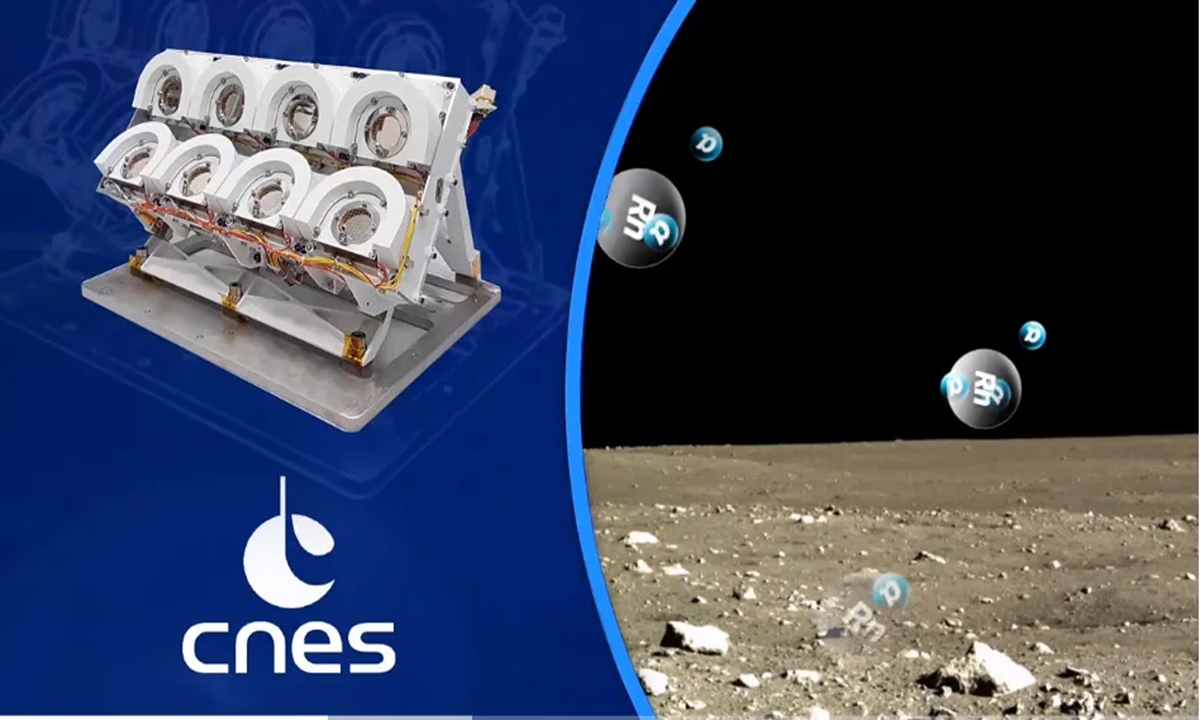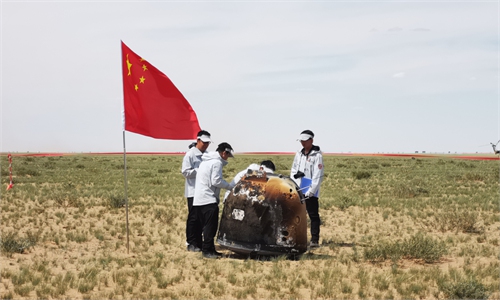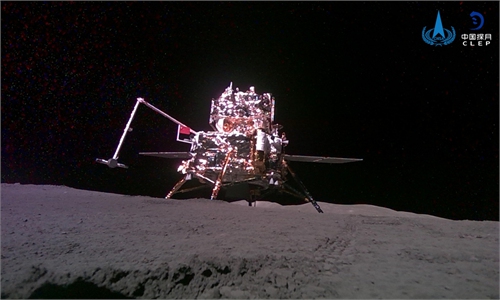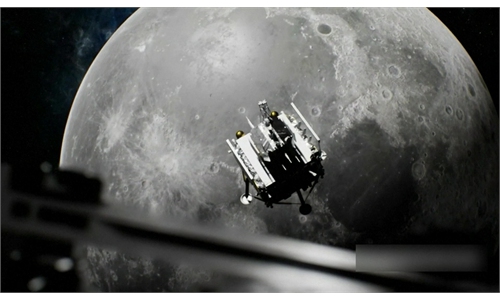
Photo: Official WeChat account of Chinese Academy of Science
The French payload aboard China's Chang'e-6 lunar probe, named Detection of Outgassing RadoN (DORN), has successfully completed its mission tasks, and has become a "permanent resident" on the far side of the moon, a Chinese research institute under the Chinese Academy of Science (CAS) announced on Monday.
During the Chang'e-6 mission, a collaborative team of Chinese and French scientists, engineers and technicians worked together on the operation of the radon gas detector at the National Astronomical Observatories of China. This marks the first collaboration between China and France in the field of deep space exploration.
DORN, the first French instrument to operate on the moon, used a silicon-based detector to measure the ionizing radiation on the lunar surface, detecting radon isotopes and studying the transmission and diffusion mechanisms of volatile compounds in the lunar environment.
The scientific goal of DORN is to study the origin and dynamics of the extremely thin lunar atmosphere, the thermal and physical properties of lunar soil, and the movement of lunar dust.
According to the research team from the Institute of Geology and Geophysics of CAS, the French instrument was first activated on May 6 during the lunar orbit cruise period, some 320,000 kilometers from Earth, and managed to measure the background noise of the space environment and natural pollution on the lunar surface.
On May 17, DORN conducted measurements in the lunar orbit, working continuously for a total of 32 hours. The data sent back to Earth confirmed that all 16 detectors of the instrument were functioning properly, obtained data on the flux of charged particles in the solar wind, tracked their decay over time and observed the shielding effect of the moon on these particle fluxes.
On May 23, DORN was powered on for the third time, and continuously worked on the moon for 111 hours. On June 2, shortly after the Chang'e-6 lunar probe landed on the far side of the moon to collect the first batch of samples, DORN completed measurements of the lunar surface.
The Chang'e-6 mission has carried four payloads developed through international cooperation, including those from France, Italy and the European Space Agency (ESA) and Pakistan.
China is set to further expand its international collaborations in upcoming lunar exploration endeavors following the successful operation of Chang'e-6, Liu Yunfeng, deputy director of the China National Space Administration's (CNSA) international cooperation department, said on June 27.
The country's Chang'e-7 lunar exploration mission, scheduled for launch around 2026, will carry six international scientific instruments; Chang'e-8, eyeing to be launched around 2028, will offer 200 kilograms of international payload capacity and has garnered over 30 applications, said Liu.
China has always maintained an open and inclusive attitude toward international cooperation, which is rare in today's complex global landscape, experts said.
While the US is busy chanting the "China threat" rhetoric in a so-called space race, China has been walking steadily step by step and produced rich, concrete results, Wang Ya'nan, chief editor of Beijing-based Aerospace Knowledge magazine, told the Global Times.
Wang noted that China has, through a series of successful space missions, demonstrated an exceptionally high capability and reliability. And this serves as a prerequisite for a good partnership, where richer samples and more ideal scientific results can be better achieved.



